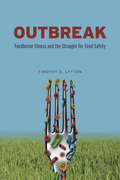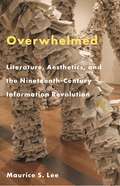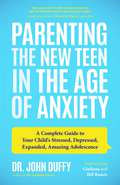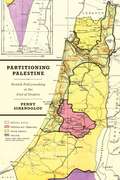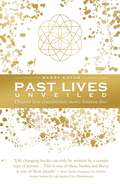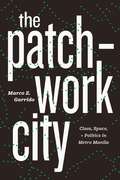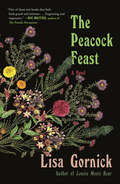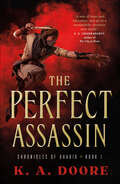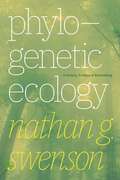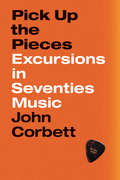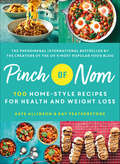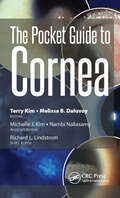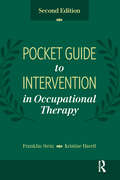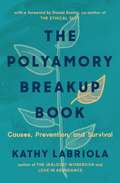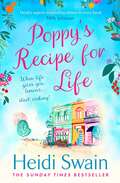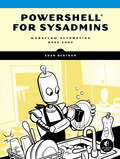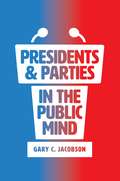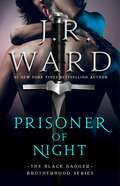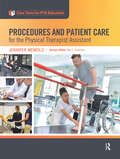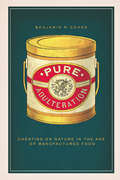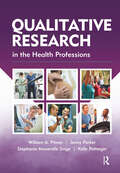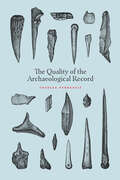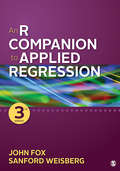- Table View
- List View
Outbreak: Foodborne Illness and the Struggle for Food Safety
by Timothy D. LyttonFoodborne illness is a big problem. Wash those chicken breasts, and you’re likely to spread Salmonella to your countertops, kitchen towels, and other foods nearby. Even salad greens can become biohazards when toxic strains of E. coli inhabit the water used to irrigate crops. All told, contaminated food causes 48 million illnesses, 128,000 hospitalizations, and 3,000 deaths each year in the United States. With Outbreak, Timothy D. Lytton provides an up-to-date history and analysis of the US food safety system. He pays particular attention to important but frequently overlooked elements of the system, including private audits and liability insurance. Lytton chronicles efforts dating back to the 1800s to combat widespread contamination by pathogens such as E. coli and salmonella that have become frighteningly familiar to consumers. Over time, deadly foodborne illness outbreaks caused by infected milk, poison hamburgers, and tainted spinach have spurred steady scientific and technological advances in food safety. Nevertheless, problems persist. Inadequate agency budgets restrict the reach of government regulation. Pressure from consumers to keep prices down constrains industry investments in safety. The limits of scientific knowledge leave experts unable to assess policies’ effectiveness and whether measures designed to reduce contamination have actually improved public health. Outbreak offers practical reforms that will strengthen the food safety system’s capacity to learn from its mistakes and identify cost-effective food safety efforts capable of producing measurable public health benefits.
Overwhelmed: Literature, Aesthetics, and the Nineteenth-Century Information Revolution
by Professor Maurice S. LeeAn engaging look at how debates over the fate of literature in our digital age are powerfully conditioned by the nineteenth century's information revolutionWhat happens to literature during an information revolution? How do readers and writers adapt to proliferating data and texts? These questions appear uniquely urgent today in a world of information overload, big data, and the digital humanities. But as Maurice Lee shows in Overwhelmed, these concerns are not new—they also mattered in the nineteenth century, as the rapid expansion of print created new relationships between literature and information.Exploring four key areas—reading, searching, counting, and testing—in which nineteenth-century British and American literary practices engaged developing information technologies, Overwhelmed delves into a diverse range of writings, from canonical works by Coleridge, Emerson, Charlotte Brontë, Hawthorne, and Dickens to lesser-known texts such as popular adventure novels, standardized literature tests, antiquarian journals, and early statistical literary criticism. In doing so, Lee presents a new argument: rather than being at odds, as generations of critics have viewed them, literature and information in the nineteenth century were entangled in surprisingly collaborative ways.An unexpected, historically grounded look at how a previous information age offers new ways to think about the anxieties and opportunities of our own, Overwhelmed illuminates today’s debates about the digital humanities, the crisis in the humanities, and the future of literature.
Parenting the New Teen in the Age of Anxiety: A Complete Guide to Your Child's Stressed, Depressed, Expanded, Amazing Adolescence
by Dr. John DuffyA Week of Delicious Keto Meals in One Hour of Meal Prep with This FlavCity Cookbook#1 Best Seller in Heart Healthy; Health, Fitness, & Dieting; Macrobiotic Nutrition; Food Allergies; and Individual Chefs & Restaurants With over 1,000,000 fans, FlavCity is known as the go-to spot for low-carb, healthy meal prep, and keto recipes that help you lose weight and actually taste good. Bobby Parrish has been featured on The Rachael Ray Show and the Food Network and is proud to call himself a home cook, just like you.Tired of eating bland, boring, healthy food? Bobby and Dessi Parrish know good food. On their hit YouTube channel, they’ve shown you can lose weight on the keto diet without sacrificing the joy of delicious food. In this FlavCity cookbook, the Parrish duo show you how to maximize your time and prepare seven days of healthy meals in one evening―and maintain your ketogenic diet. You’ll spend less time cooking and more time enjoying.Easy, creative, tasty meals. This FlavCity cookbook includes over 125 low carb recipes full of flavor. Meet your weight loss goals with dishes perfectly calibrated to the ketogenic diet. Each easy-to-follow recipe can be prepped in advance, so when you’re tired and hungry, a healthy meal is just minutes away. Mix and match the base recipes and your meal combinations are endless.Inside find:50 keto meal prep recipes, 2–3 components each25 keto-approved recipesDetailed macros and carb countsAllergen index for nuts, dairy, and eggs, with Paleo designationVideo tutorials live on YouTubeTips for becoming a meal prep bossFan reviews and more!If you liked Simply Keto, The Easy 5-Ingredient Ketogenic Diet Cookbook, The Complete Ketogenic Diet for Beginners, or Keto Made Easy, you’ll love Keto Meal Prep. Also try the latest FlavCity cookbook, FlavCity’s 5 Ingredient Meals.Please note: recipes indicated as being “Whole30 diet compliant” have not been independently evaluated for compliance by Thirty & Co., LLC d/b/a Whole30®
Partitioning Palestine: British Policymaking at the End of Empire
by Penny SinanoglouPartitioning Palestine is the first history of the ideological and political forces that led to the idea of partition—that is, a division of territory and sovereignty—in British mandate Palestine in the first half of the twentieth century. Inverting the spate of narratives that focus on how the idea contributed to, or hindered, the development of future Israeli and Palestinian states, Penny Sinanoglou asks instead what drove and constrained British policymaking around partition, and why partition was simultaneously so appealing to British policymakers yet ultimately proved so difficult for them to enact. Taking a broad view not only of local and regional factors, but also of Palestine’s place in the British empire and its status as a League of Nations mandate, Sinanoglou deftly recasts the story of partition in Palestine as a struggle to maintain imperial control. After all, British partition plans imagined space both for a Zionist state indebted to Britain and for continued British control over key geostrategic assets, depending in large part on the forced movement of Arab populations. With her detailed look at the development of the idea of partition from its origins in the 1920s, Sinanoglou makes a bold contribution to our understanding of the complex interplay between internationalism and imperialism at the end of the British empire and reveals the legacies of British partitionist thinking in the broader history of decolonization in the modern Middle East.
Past Lives Unveiled: Discover how consciousness moves between lives
by Barry EatonStruggling to stay alive with a gaping wound across my back, I desperately wondered how I got to this point. My knife-wielding opponent was not the attacker... He'd been defending himself against an ego-driven, menacing thug who was intent on hurting him. That thug was me. In a hole of anxiety and depression, Luke Kennedy resorted to drugs, alcohol, graffiti and fighting in a desperate bid to silence his frantic mind. Soon he was leading a street-fighting and graffiti crew, and constantly coming close to killing others or being killed. Tortured by the voices in his head, Luke began looking for an out. Eventually he found it - and lost 47 kilos in the process. Redemption Road is the gripping and powerful story of Luke's journey from ego-driven, obese thug to fit, sober and successful business owner whose focus is on helping others turn their lives around.
The Patchwork City: Class, Space, + Politics in Metro Manila
by Marco Z. GarridoIn contemporary Manila, slums and squatter settlements are peppered throughout the city, often pushing right up against the walled enclaves of the privileged, creating the complex geopolitical pattern of Marco Z. Garrido’s “patchwork city.” Garrido documents the fragmentation of Manila into a mélange of spaces defined by class, particularly slums and upper- and middle-class enclaves. He then looks beyond urban fragmentation to delineate its effects on class relations and politics, arguing that the proliferation of these slums and enclaves and their subsequent proximity have intensified class relations. For enclave residents, the proximity of slums is a source of insecurity, compelling them to impose spatial boundaries on slum residents. For slum residents, the regular imposition of these boundaries creates a pervasive sense of discrimination. Class boundaries then sharpen along the housing divide, and the urban poor and middle class emerge not as labor and capital but as squatters and “villagers,” Manila’s name for subdivision residents. Garrido further examines the politicization of this divide with the case of the populist president Joseph Estrada, finding the two sides drawn into contention over not just the right to the city, but the nature of democracy itself.The Patchwork City illuminates how segregation, class relations, and democracy are all intensely connected. It makes clear, ultimately, that class as a social structure is as indispensable to the study of Manila—and of many other cities of the Global South—as race is to the study of American cities.
The Peacock Feast: A Novel
by Lisa GornickFrom “one of the most perceptive, compassionate writers of fiction in America...immensely talented and brave” (Michael Schaub, NPR), a historical saga about love, class, and the past we never escape.The Peacock Feast opens on a June day in 1916 when Louis C. Tiffany, the eccentric glass genius, dynamites the breakwater at Laurelton Hall—his fantastical Oyster Bay mansion, with columns capped by brilliant ceramic blossoms and a smokestack hidden in a blue-banded minaret—so as to foil the town from reclaiming the beach for public use. The explosion shakes both the apple crate where Prudence, the daughter of Tiffany’s prized gardener, is sleeping and the rocks where Randall, her seven-year-old brother, is playing.Nearly a century later, Prudence receives an unexpected visit at her New York apartment from Grace, a hospice nurse and the granddaughter of Randall, who Prudence never saw again after he left at age fourteen for California. The mementos Grace carries from her grandfather’s house stir Prudence’s long-repressed memories and bring her to a new understanding of the choices she made in work and love, and what she faces now in her final days.Spanning the twentieth century and three continents, The Peacock Feast ricochets from Manhattan to San Francisco, from the decadent mansions of the Tiffany family to the death row of a Texas prison, and from the London consultation room of Anna Freud to a Mendocino commune. With psychological acuity and aching eloquence, Lisa Gornick has written a sweeping family drama, an exploration of the meaning of art and the art of dying, and an illuminating portrait of how our decisions reverberate across time and space.
The Perfect Assassin: Book 1 In The Chronicles Of Ghadid (The Chronicles of Ghadid #1)
by K. A. DooreA novice assassin is on the hunt for someone killing their own in K. A. Doore's The Perfect Assassin, a breakout high fantasy beginning the Chronicles of Ghadid series. Divine justice is written in blood.Or so Amastan has been taught. As a new assassin in the Basbowen family, he’s already having second thoughts about taking a life. A scarcity of contracts ends up being just what he needs.Until, unexpectedly, Amastan finds the body of a very important drum chief. Until, impossibly, Basbowen’s finest start showing up dead, with their murderous jaan running wild in the dusty streets of Ghadid. Until, inevitably, Amastan is ordered to solve these murders, before the family gets blamed.Every life has its price, but when the tables are turned, Amastan must find this perfect assassin or be their next target.“The Perfect Assassin is a thrilling fantastical mystery that had me racing through the pages.” —S. A. Chakraborty, author of The City of Brass“Full of rooftop fights, frightening magic, and nonstop excitement and mystery, I absolutely loved it from start to finish!” — Sarah Beth DurstThe Chronicles of Ghadid#1: The Perfect Assassin#2: The Impossible Contract#3: The Unconquered CityAt the Publisher's request, this title is being sold without Digital Rights Management Software (DRM) applied.
The Phlebotomy Textbook
by Susan King Strasinger Marjorie Schaub Di LorenzoRely on this comprehensive resource to master the techniques you need to safely obtain quality specimens. You’ll understand all the how's and whys that lead to success in this rapidly changing field. Inside, you’ll find the up-to-date coverage of routine procedures and their complications as well specialized procedures, quality and infection control, state-of-the-art equipment, medical terminology, ethical and legal issues, body systems, and related diagnostic laboratory tests. Videos and animations online help you to excel.
Phylogenetic Ecology: A History, Critique, & Remodeling (Use R! Ser.)
by Nathan G. SwensonOver the past decade, ecologists have increasingly embraced phylogenetics, the study of evolutionary relationships among species. As a result, they have come to discover the field’s power to illuminate present ecological patterns and processes. Ecologists are now investigating whether phylogenetic diversity is a better measure of ecosystem health than more traditional metrics like species diversity, whether it can predict the future structure and function of communities and ecosystems, and whether conservationists might prioritize it when formulating conservation plans. In Phylogenetic Ecology, Nathan G. Swenson synthesizes this nascent field’s major conceptual, methodological, and empirical developments to provide students and practicing ecologists with a foundational overview. Along the way, he highlights those realms of phylogenetic ecology that will likely increase in relevance—such as the burgeoning subfield of phylogenomics—and shows how ecologists might lean on these new perspectives to inform their research programs.
Pick Up the Pieces: Excursions in Seventies Music
by John CorbettUnless you lived through the 1970s, it seems impossible to understand it at all. Drug delirium, groovy fashion, religious cults, mega corporations, glitzy glam, hard rock, global unrest—from our 2018 perspective, the seventies are often remembered as a bizarre blur of bohemianism and disco. With Pick Up the Pieces, John Corbett transports us back in time to this thrillingly tumultuous era through a playful exploration of its music. Song by song, album by album, he draws our imaginations back into one of the wildest decades in history. Rock. Disco. Pop. Soul. Jazz. Folk. Funk. The music scene of the 1970s was as varied as it was exhilarating, but the decade’s diversity of sound has never been captured in one book before now. Pick Up the Pieces gives a panoramic view of the era’s music and culture through seventy-eight essays that allow readers to dip in and out of the decade at random or immerse themselves completely in Corbett’s chronological journey. An inviting mix of skilled music criticism and cultural observation, Pick Up the Pieces is also a coming-of-age story, tracking the author’s absorption in music as he grows from age seven to seventeen. Along with entertaining personal observations and stories, Corbett includes little-known insights into musicians from Pink Floyd, Joni Mitchell, James Brown, and Fleetwood Mac to the Residents, Devo, Gal Costa, and Julius Hemphill. A master DJ on the page, Corbett takes us through the curated playlist that is Pick Up the Pieces with captivating melody of language and powerful enthusiasm for the era. This funny, energetic book will have readers longing nostalgically for a decade long past.
Pierre Foods Acquisition of Advanced Foods (D-2): Credit Agreement - Lender Perspective
by Guhan Subramanian Mike HarmonSupplement to case 919022
Pinch of Nom: 100 Home-Style Recipes for Health and Weight Loss (Pinch Of Nom Ser.)
by Kay Featherstone Kate AllinsonThe must-have cookbook from the UK's most popular food blog, Americanized for a US audience!For breakfast, lunch, dinner, and desserts, Kate Allinson and Kay Featherstone's pinchofnom.com has helped millions of people cook delicious food and lose weight. With over 100 incredible recipes, the Pinch of Nom cookbook can help beginner and experienced home-cooks alike enjoy exciting, flavorful, and satisfying meals. From Chicken Fajita Pie and Vegetable Tagine to Cheesecake Stuffed Strawberries and Tiramisu, this food is so good you’ll never guess the calorie count.Each recipe is labeled with icons to guide you toward the ones to eat tonight—whether you’re looking for a vegetarian dish, hoping to create a takeout meal, want to feed a family of four or more, or have limited time to shop, prep, and cook.Pinch of Nom is the go-to home cookbook for mouthwatering meals that work for readers on diet plans like Weight Watchers, counting carbs and calories, or following any other goal-oriented eating program.
The Pocket Guide to Cornea (Pocket Guides)
by Terry Kim Melissa DaluvoyAre you a medical student or resident trying to absorb as much information on the cornea as efficiently as possible? Are you an ophthalmologist who needs fast facts on a specific corneal disease? Reach into your lab coat pocket and pull out The Pocket Guide to Cornea for easy access to the information you need right now. Drs. Terry Kim and Melissa Daluvoy have designed this book as the most effective way to take in the information on the cornea for the entire spectrum of eye care providers. Medical students and residents will be pleased to have this accessible, high-yield handbook during their rotations to familiarize themselves with cornea findings and diagnoses, while seasoned ophthalmologists will be glad to have it as a refresher or quick reference guide to current diagnostic and treatment standards. Contained within The Pocket Guide to Cornea is the most essential information on the cornea organized in the most efficient ways. Each chapter is arranged in bullet-point style, for quick access to the relevant information, and is accompanied by numerous color photographs to help with recognition and retention.Topics covered: Basic examination techniques Anterior segment testing and imaging Common to rare cornea diseases Common procedures and surgeries The entire spectrum of eye care providers can benefit from the high-yield, quick-access information contained within The Pocket Guide to Cornea, whether they are learning about the cornea for the first time or they just need a quick refresher on an obscure corneal disease.
Pocket Guide to Intervention in Occupational Therapy
by Kristine Haertl Franklin SteinPocket Guide to Intervention in Occupational Therapy, Second Edition builds upon the strengths of the first edition as a useful quick reference of occupational therapy terms and interventions regarding specific diagnoses and conditions. Occupational therapy is an evidence-based health care profession that uses scientifically based research to justify clinical practice. Interventions in hospitals, clinics, and community and school settings continue to evolve based on scientific evidence. These interventions are intended to prevent injury and maintain or improve client function. Pocket Guide to Intervention in Occupational Therapy, Second Edition by Dr. Franklin Stein and Dr. Kristine Haertl is organized around the major conditions that occupational therapists encounter in their everyday practice. These include physical, psychosocial, cognitive, geriatric, and pediatric diagnoses. Intervention guidelines are outlined for the major disabilities. In addition, there are brief descriptions of the intervention techniques that therapists use and definitions of terms that are relevant to interventions. Intervention techniques encompass the following: Non-medical techniques such as client health education or counseling Instruction in activities of daily living, modifying of environment such as in ergonomics Teaching and demonstrating arts and crafts as therapeutic activities Providing sensory stimulating activities especially for children The appendices include an outline of essential skills for occupational therapists, general developmental guidelines, an overview of muscles and movements, orthotic devices, tables of muscles, average range of motion measurements, prime movers for upper and selected lower extremity motions, and substitutions for muscle contractions.Pocket Guide to Intervention in Occupational Therapy, Second Edition is based on the latest scientific evidence garnered from recent research studies, meta-analyses, scoping reviews, occupational therapy textbooks and their own wide experiences as a clinician, professor and researcher.
The Polyamory Breakup Book: Causes, Prevention, and Survival
by Kathy Labriola Lacey JohnsonPolyamory is not always easy. With multiple partners often come more complex relationships to navigate. This practical guide looks at the common causes of polyamorous breakups, identifies strategies to avoid ending relationships, and provides you with the toolkit to survive a breakup. Kathy Labriola uses real life examples and expert insight as a counselor and nurse. From how to handle jealousy to the practicalities of managing money and time with multiple partners, this book includes tips and insights from the polyamory community. It is inevitable that some relationships will end in a breakup. This book helps you maintain friendships and minimize the impact of a breakup on the rest of your polycule and wider community. Unlike traditional breakup guides, Labriola's book offers insight specific to the polyamory community and addresses the unique challenges that come with multiple partners.
Poppy's Recipe for Life: Treat yourself to the gloriously uplifting new book from the Sunday Times bestselling author!
by Heidi Swain*** THE SUNDAY TIMES BESTSELLER *** Treat yourself to a glorious novel full of food, sunshine, friendship and love! Things haven&’t always been straightforward in Poppy&’s life but her dreams are finally within her reach. She's moving into a cottage in beautiful Nightingale Square, close to the local community garden, where she can indulge her passion for making preserves and pickles. She may not have the best relationship with her family but she is surrounded by loving friends, and feels sure that even her grumpy new neighbour, Jacob, has more to him than his steely exterior belies. But the unexpected arrival of Poppy's troubled younger brother soon threatens her new-found happiness and as the garden team works together to win community space of the year, Poppy must decide where her priorities lie and what she is prepared to fight for …Readers everywhere are falling in love with Heidi Swain&’s writing: &‘A lovely, sweet, summery read&’ Milly Johnson &‘Wise, warm and wonderful&’ heat 'A ray of reading sunshine!&’ Laura Kemp, author of A Year of Surprising Acts of Kindness &‘Sparkling and romantic&’ My Weekly
PowerShell for Sysadmins: Workflow Automation Made Easy
by Adam BertramLearn to use PowerShell, Microsoft's scripting language, to automate real-world tasks that IT professionals and system administrators deal with every day.Save Time. Automate.PowerShell® is both a scripting language and an administrative shell that lets you control and automate nearly every aspect of IT. In PowerShell for Sysadmins, five-time Microsoft® MVP "Adam the Automator" Bertram shows you how to use PowerShell to manage and automate your desktop and server environments so that you can head out for an early lunch.You'll learn how to:Combine commands, control flow, handle errors, write scripts, run scripts remotely, and test scripts with the PowerShell testing framework, PesterParse structured data like XML and JSON, work with common domains (like Active Directory, Azure, and Amazon Web Services), and create a real-world server inventory scriptDesign and build a PowerShell module to demonstrate PowerShell isn't just about ad-hoc scriptsUse PowerShell to create a hands-off, completely automated Windows deploymentBuild an entire Active Directory forest from nothing but a Hyper-V host and a few ISO filesCreate endless Web and SQL servers with just a few lines of code!Real-world examples throughout help bridge the gap between theory and actual system, and the author's anecdotes keep things lively.Stop with the expensive software and fancy consultants. Learn how to manage your own environment with PowerShell for Sysadmins and make everyone happy.Covers Windows PowerShell v5.1
Presidents & Parties in the Public Mind
by Gary C. JacobsonHow is Donald Trump’s presidency likely to affect the reputation and popular standing of the Republican Party? Profoundly, according to Gary C. Jacobson. From Harry S. Truman to Barack Obama, every postwar president has powerfully shaped Americans’ feelings, positive or negative, about their party. The effect is pervasive, influencing the parties’ reputations for competence, their perceived principles, and their appeal as objects of personal identification. It is also enduring, as presidents’ successes and failures continue to influence how we see their parties well beyond their time in office. With Presidents and Parties in the Public Mind, Gary C. Jacobson draws on survey data from the past seven administrations to show that the expansion of the executive branch in the twentieth century that gave presidents a greater role in national government also gave them an enlarged public presence, magnifying their role as the parties’ public voice and face. As American politics has become increasingly nationalized and president-centered over the past few decades, the president’s responsibility for the party’s image and status has continued to increase dramatically. Jacobson concludes by looking at the most recent presidents’ effects on our growing partisan polarization, analyzing Obama’s contribution to this process and speculating about Trump’s potential for amplifying the widening demographic and cultural divide.
Prisoner of Night (The Black Dagger Brotherhood World #17)
by J.R. WardFrom #1 New York Times bestselling author J.R. Ward comes an unforgettable story of passion and vengeance in the Black Dagger Brotherhood world.When Ahmare&’s brother is abducted, there is nothing she won&’t do to get him back safely. She is unprepared, however, for the lengths she will have to go to save his life. Paired with a dangerous but enticing prisoner, she embarks on an odyssey into another world. Duran, betrayed by his father, imprisoned in a dungeon for decades, has survived only because of his thirst for vengeance. He has been biding his time to escape and is shocked to find an unlikely and temporary freedom in the form of a determined young female. Battling against deadly forces and facing unforeseen peril, the pair are in a race to save Ahmare&’s brother. As time runs out, and the unthinkable looms, even true love may not be enough to carry them through.
Procedures and Patient Care for the Physical Therapist Assistant (Core Texts for PTA Education)
by Jennifer MemoloProcedures and patient care will be one of the first courses a physical therapist assistant (PTA) student will encounter as they begin their educational career. The foundational material covered in Procedures and Patient Care for the Physical Therapist Assistant includes information about transfers, positioning, vital sign measurement, wheelchair fit and management, assistive devices, and gait. These skills are vital to know as a PTA, regardless of specialization or location of employment.Inside Procedures and Patient Care for the Physical Therapist Assistant, Jennifer Memolo includes objectives, key terms, common abbreviations, and review questions. Also, in each chapter is information adhering to the current best practice and an understanding of red flags a PTA should know and report to supervising physical therapists or other health care providers.This text stands out from others because it is catered specifically to PTA students rather than the generalized health care practitioner. It can be used throughout the student’s education as a reference since all other courses build upon and cycle back to this core information. It can also be utilized even after graduation as preparatory material for the board examination or as a refresher for the practicing clinician.Included with the text are online supplemental materials for faculty use in the classroom.Procedures and Patient Care for the Physical Therapist Assistant provides core information that the PTA will use and build upon throughout their entire career which is what makes it a suitable text for students, faculty, and clinicians.
Pure Adulteration: Cheating on Nature in the Age of Manufactured Food
by Benjamin R. CohenBenjamin R. Cohen uses the pure food crusades at the turn of the twentieth century to provide a captivating window onto the origins of manufactured foods in the United States. In the latter nineteenth century, extraordinary changes in food and agriculture gave rise to new tensions in the ways people understood, obtained, trusted, and ate their food. This was the Era of Adulteration, and its concerns have carried forward to today: How could you tell the food you bought was the food you thought you bought? Could something manufactured still be pure? Is it okay to manipulate nature far enough to produce new foods but not so far that you question its safety and health? How do you know where the line is? And who decides? In Pure Adulteration, Benjamin R. Cohen uses the pure food crusades to provide a captivating window onto the origins of manufactured foods and the perceived problems they wrought. Cohen follows farmers, manufacturers, grocers, hucksters, housewives, politicians, and scientific analysts as they struggled to demarcate and patrol the ever-contingent, always contested border between purity and adulteration, and as, at the end of the nineteenth century, the very notion of a pure food changed. In the end, there is (and was) no natural, prehuman distinction between pure and adulterated to uncover and enforce; we have to decide. Today’s world is different from that of our nineteenth-century forebears in many ways, but the challenge of policing the difference between acceptable and unacceptable practices remains central to daily decisions about the foods we eat, how we produce them, and what choices we make when buying them.
Qualitative Research in the Health Professions
by William Pitney Jenny Parker Stephanie Mazerolle Kelly PotteigerQualitative research can provide a great depth of understanding for health professionals in practice. Although many general research texts used in health discipline research courses present a broad spectrum of research methods, their discussion of qualitative methods is often limited. Qualitative Research in the Health Professions by Drs. William A. Pitney, Jenny Parker, Stephanie M. Mazerolle, and Kelly Potteiger, is a practical and straightforward text for those learning about qualitative research in the health professions. In Qualitative Research in the Health Professions, readers will acquire skills in mastering:• Introductory concepts of qualitative research, how it compares to quantitative research, and how to conceptualize a qualitative study • How to conduct a qualitative research study and present findings, including sections on collecting and analyzing data, ensuring trustworthiness of the data, and attending to ethical issues • Advanced concepts including various forms of qualitative research, how to mix quantitative and qualitative methods, and how to evaluate qualitative research Each chapter includes activities and exercises to further students’ understanding and the text also includes personal commentaries from scholarly practitioners in various health professions underscoring the value and importance of qualitative research. Qualitative Research in the Health Professionswill help current and future practitioners master the principles of qualitative research, understand published qualitative studies, and apply these findings in furthering evidence-based practice.
The Quality of the Archaeological Record
by Charles PerreaultPaleobiology struggled for decades to influence our understanding of evolution and the history of life because it was stymied by a focus on microevolution and an incredibly patchy fossil record. But in the 1970s, the field took a radical turn, as paleobiologists began to investigate processes that could only be recognized in the fossil record across larger scales of time and space. That turn led to a new wave of macroevolutionary investigations, novel insights into the evolution of species, and a growing prominence for the field among the biological sciences. In The Quality of the Archaeological Record, Charles Perreault shows that archaeology not only faces a parallel problem, but may also find a model in the rise of paleobiology for a shift in the science and theory of the field. To get there, he proposes a more macroscale approach to making sense of the archaeological record, an approach that reveals patterns and processes not visible within the span of a human lifetime, but rather across an observation window thousands of years long and thousands of kilometers wide. Just as with the fossil record, the archaeological record has the scope necessary to detect macroscale cultural phenomena because it can provide samples that are large enough to cancel out the noise generated by micro-scale events. By recalibrating their research to the quality of the archaeological record and developing a true macroarchaeology program, Perreault argues, archaeologists can finally unleash the full contributive value of their discipline.
An R Companion to Applied Regression
by John Fox Sanford WeisbergAn R Companion to Applied Regression is a broad introduction to the R statistical computing environment in the context of applied regression analysis. John Fox and Sanford Weisberg provide a step-by-step guide to using the free statistical software R, an emphasis on integrating statistical computing in R with the practice of data analysis, coverage of generalized linear models, and substantial web-based support materials. The Third Edition has been reorganized and includes a new chapter on mixed-effects models, new and updated data sets, and a de-emphasis on statistical programming, while retaining a general introduction to basic R programming. The authors have substantially updated both the car and effects packages for R for this edition, introducing additional capabilities and making the software more consistent and easier to use. They also advocate an everyday data-analysis workflow that encourages reproducible research. To this end, they provide coverage of RStudio, an interactive development environment for R that allows readers to organize and document their work in a simple and intuitive fashion, and then easily share their results with others. Also included is coverage of R Markdown, showing how to create documents that mix R commands with explanatory text. "An R Companion to Applied Regression continues to provide the most comprehensive and user-friendly guide to estimating, interpreting, and presenting results from regression models in R." –Christopher Hare, University of California, Davis
